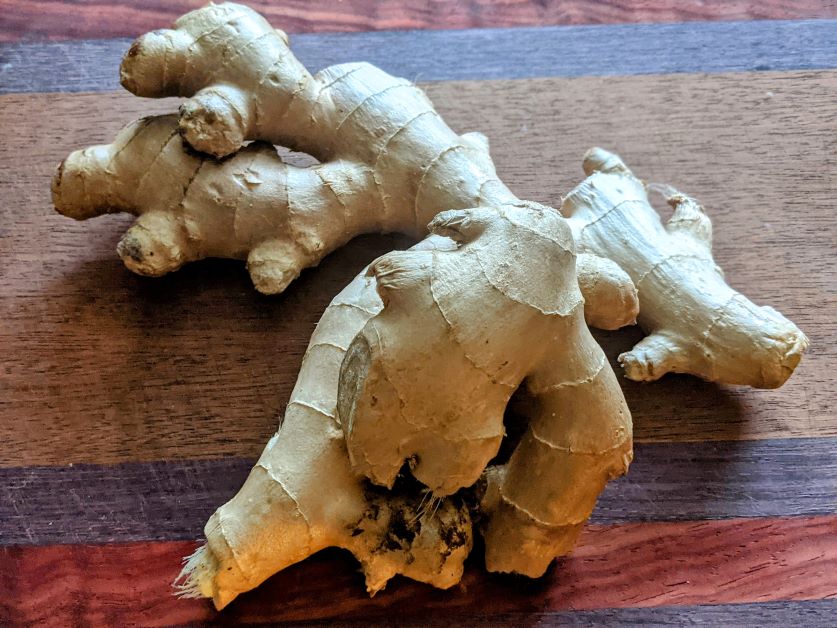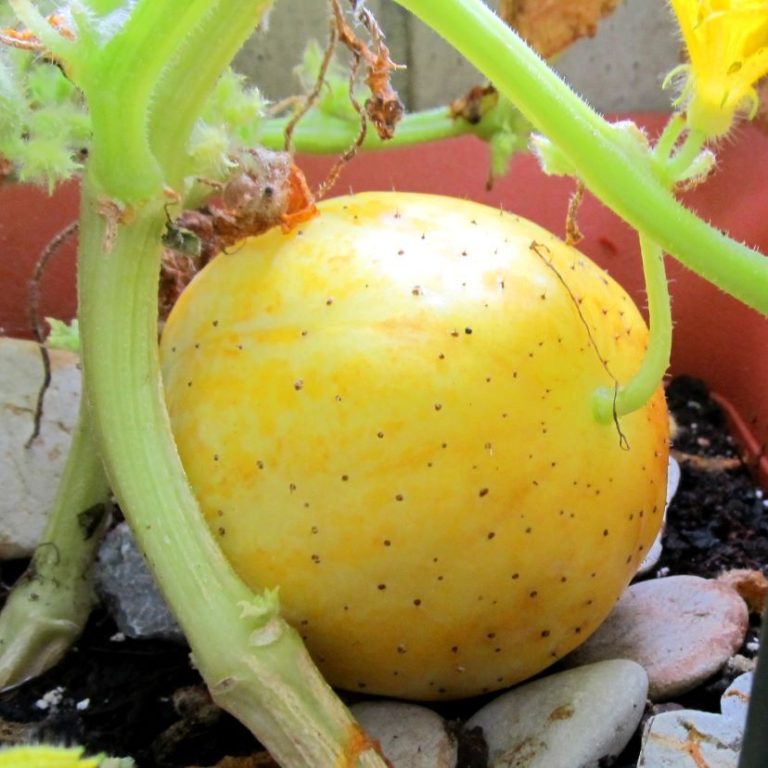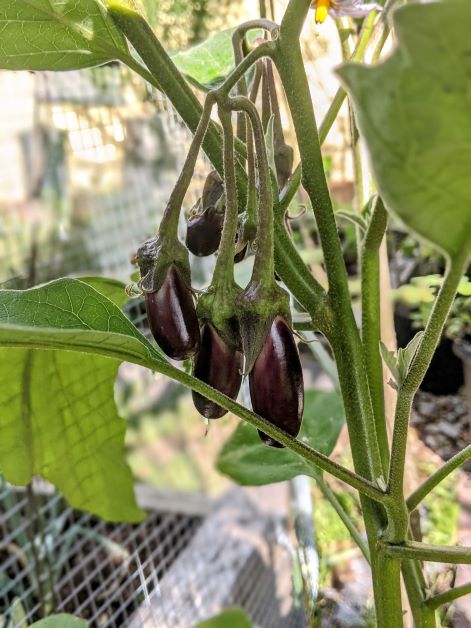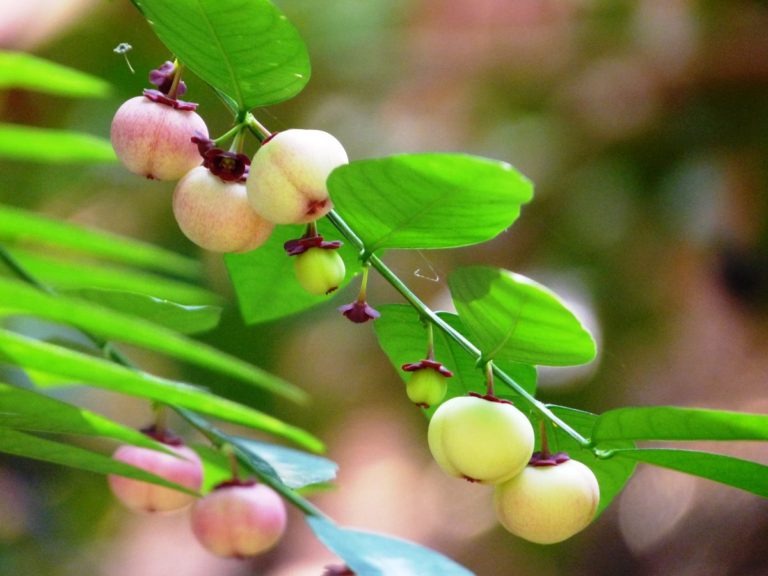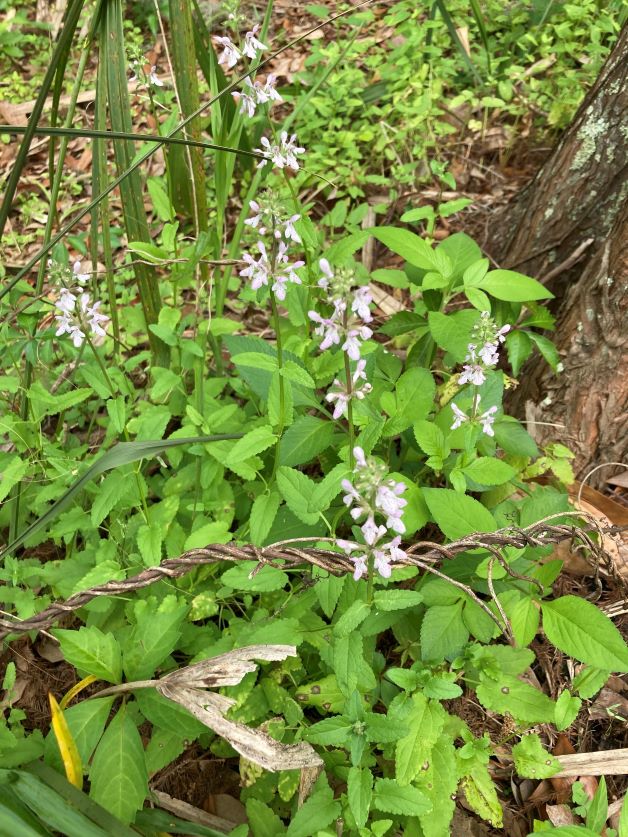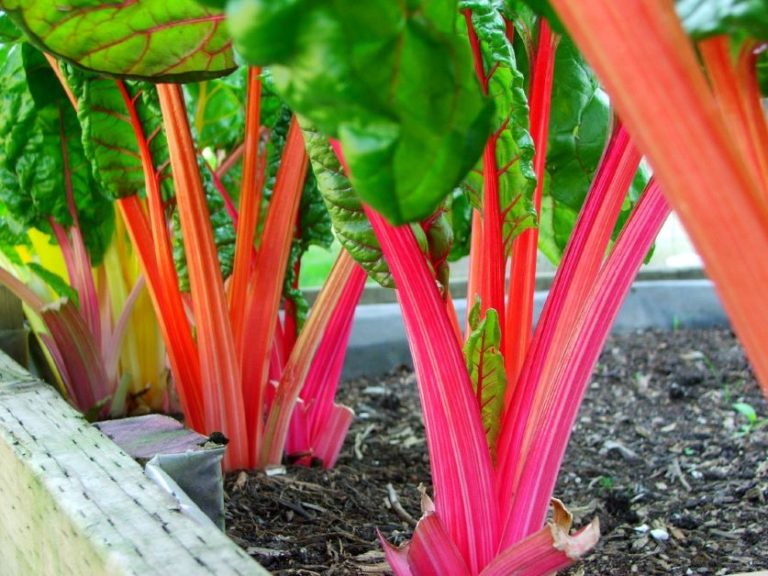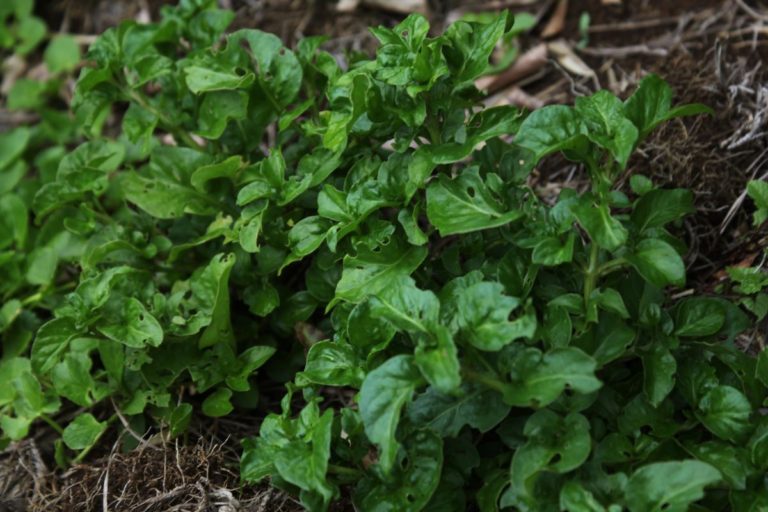Growing Ginger Root in Florida
Growing ginger root in Florida is so easy, all you really need to do to get started is take a trip to the grocery store. Ginger is a mainstay in kitchen scrap gardening and since it needs a lot of heat and humidity to thrive, it grows fantastically in our subtropical climate.
How does Ginger Grow?
Ginger looks like a hunk of root, but it’s actually a rhizome. A rhizome is a fancy way of saying an underground stem that grows by putting out roots and shoots up and down and side to side.
While ginger leaves and flowers are technically edible, the rhizome is the part of the plant that you’d normally eat. This is also the part of the ginger that you plant into the ground. Ginger doesn’t grow from seeds or cuttings.
As the rhizome grows, it sends out shoots upwards through the soil. It also grows horizontally under the ground, which means the plant will grow wide rather than tall. A ginger plant usually grows to about three feet in height.
Conditions for Growing Ginger
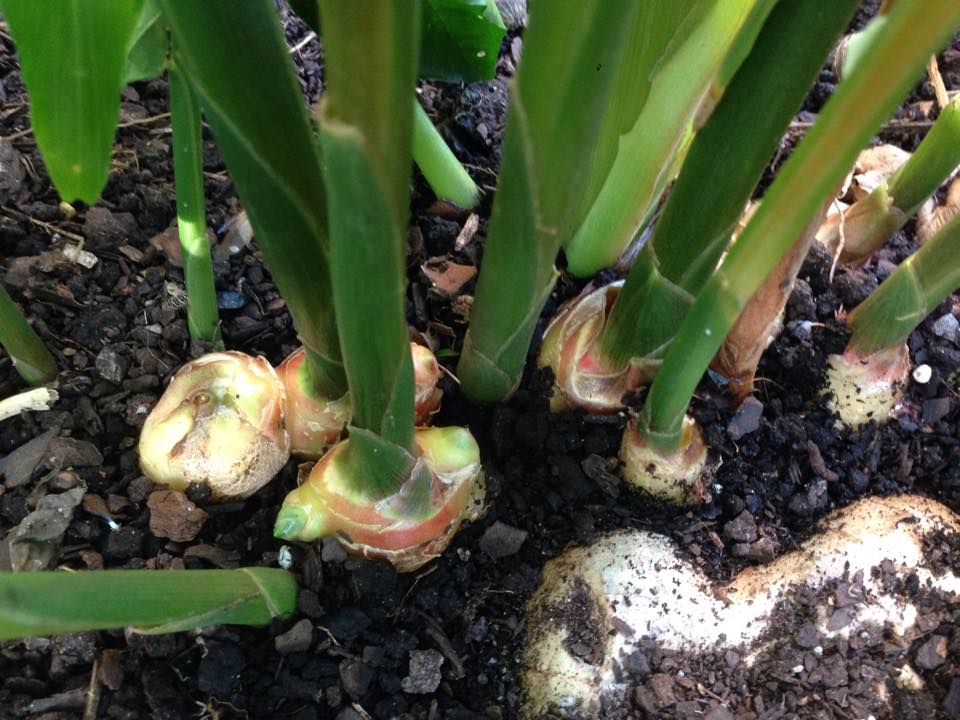
Temperature
Edible ginger is hardy in USDA zones 9-12. To get the best chances of a big ginger harvest, start your ginger roots in spring so that they grow over the hottest part of the year. Ginger’s perfect temperature range is 75F-78F and it goes dormant if temperatures are consistently below 50F.
Ginger is a perennial and as long as the rhizome doesn’t go through a hard frost, they’ll sprout again come spring.
Ginger grows year-round in Central and South Florida, although it may go dormant in some parts of Central Florida. Because frost is common in North Florida during winter, a lot of gardeners there grow ginger in containers. When you grow ginger in a container, you can bring it inside to overwinter.
If you want to grow your ginger in the ground in North Florida, you can. Just be sure to dig up your rhizomes before the first frost and save them for planting in spring.
Soil
Because it’s a rhizome, ginger needs well-draining soil. If the ginger rhizome stays too damp for too long, it’ll rot instead of growing. How fertile your soil is isn’t as important as how well-draining it is. This makes Florida’s sandy, nutrient-deficient soil the perfect growing medium for ginger.
Light
Ginger does best in full to partial shade. Too much sun will burn your plants and cause the leaves to turn brown. 2 to 5 hours of dappled sun is ideal.
If you’re growing your ginger in an especially hot, sunny climate (like South Florida), then plant your ginger in full shade instead of partial.
Water
Because ginger is susceptible to rotting, it’s important that you don’t overwater. At the same time, ginger is tropical which means it needs moisture and humidity. How much you water your ginger depends on what growing stage it’s in, what time of year it is, and where you have it planted.
When your ginger is rooting and establishing itself, it’s important to keep it a little moist but not soggy. This is the stage in which it’s the easiest to accidentally overwater.
After you transplant your ginger root, it gets a little hardier against overwatering. When it seems overly wet, don’t water it that day. If the leaves start getting burnt, brown, or dry, then you should water more often.
The ginger in my Central Florida garden thrives on neglect. I water it a few times a week during droughts. In the summer or when it’s dormant in winter, I skip watering altogether.
Growing Ginger from Root
How to Choose the Right Ginger From the Grocery Store
There are a few things to look for when growing your ginger from the grocery store.
This is one of those times that it’s important to buy organic. Some non-organic ginger is sprayed with a growth inhibitor that stops it from sprouting. There’s no way to tell if a ginger root has been sprayed with inhibitor, so play it safe and buy organic.
Although ginger lasts a pretty long time, it doesn’t exactly fly off the shelves at the grocery store. Make sure the piece you choose isn’t too old. Your ginger should look healthy and plump. Avoid roots that are soft, discolored, or wrinkled.
You’ll also want to pick a ginger root that has growing nodes, or eyes, on it. This is the part of the root that the ginger will grow from. The more nodes, the more opportunities for growth.

Buy more root than you think you’ll need. It’s always good to have a backup plan when you start a new crop. Maybe one of your ginger roots rots instead of sprouts? Plant a couple of extra pieces of ginger root in case something goes wrong. If you end up having too many starters, you can always give one to a friend.
How to Sprout a Ginger Root
There are two different ways you can sprout your ginger – in soil or in water. Both methods work well, but your plant will grow a little faster if your pre-sprout it in water before planting.
Sprouting Ginger in Water
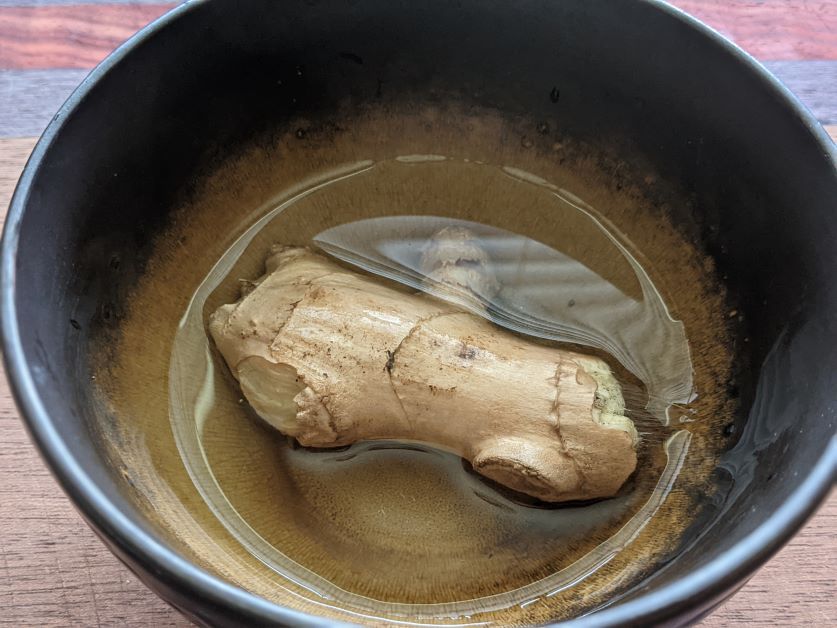
Sprouting Ginger in Soil
When sprouting your ginger in soil, it’s best to choose a container that’s shallow and wide. This’ll help improve drainage and stop your root from rotting.
Any soil that is well-draining will do. You can use pre-bagged potting soil, or you can mix your own. For my edible ginger, I use a ratio of one part perlite, one part mushroom compost, and two parts topsoil.
Successful (and fun) gardening is all about experimentation. Try pre-mixed and mix your own to see which method works best for you.
Plant your ginger root shallow — bury it about 1/2 an inch below the surface of the soil while leaving the top of the root exposed. This will help the root sprout faster.
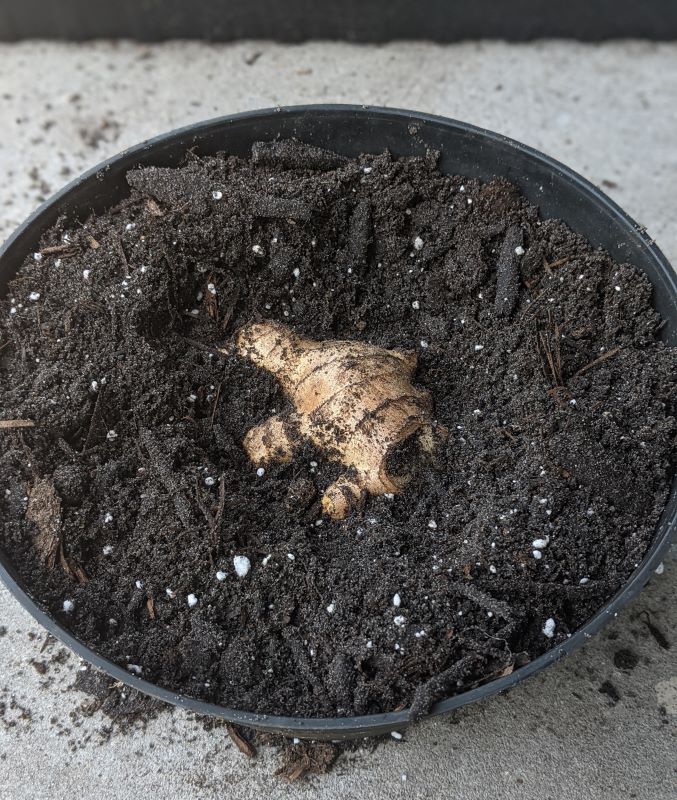
Once your root is planted, water it in. Keep the soil moist but not soggy. It can be easy to overwater and cause your ginger root to rot.
It’ll take six to eight weeks after planting for ginger sprouts to pop up above the soil.
How to Transplant Ginger Plants
Ginger takes well to transplanting. Here are a few tips to ensure your transplanting is successful:
- Supplement your soil with compost 2 weeks before transplanting.
- Wait until your ginger sprouts are 3-6 inches long before transplanting, with 6 inches being ideal.
- Plant your ginger rhizome 2-4 inches deep, making sure that a few inches of sprout are still above the soil line.
- Plant one sprouted ginger root per 1 square foot of area and water it in.
How to Propagate Ginger Plants
Once you have a patch of ginger established and spreading, you can break it up and plant it to make more plants.
Using a shovel, dig up a clump of ginger. Take care to keep the greenery attached. When you have your ginger out of the ground, break the rhizome into pieces at least 2 inches long. The rhizome should snap apart in your hand.
Dig some small holes that are 6-8 inches deep wherever you want to plant more ginger. Bury your rhizome pieces but keep the greenery exposed. Water in your propagated ginger and keep the soil moist but not soggy. Once those ginger pieces get established, they’ll start spreading and you can repeat the process to make more plants.
How to Grow Ginger in a Pot
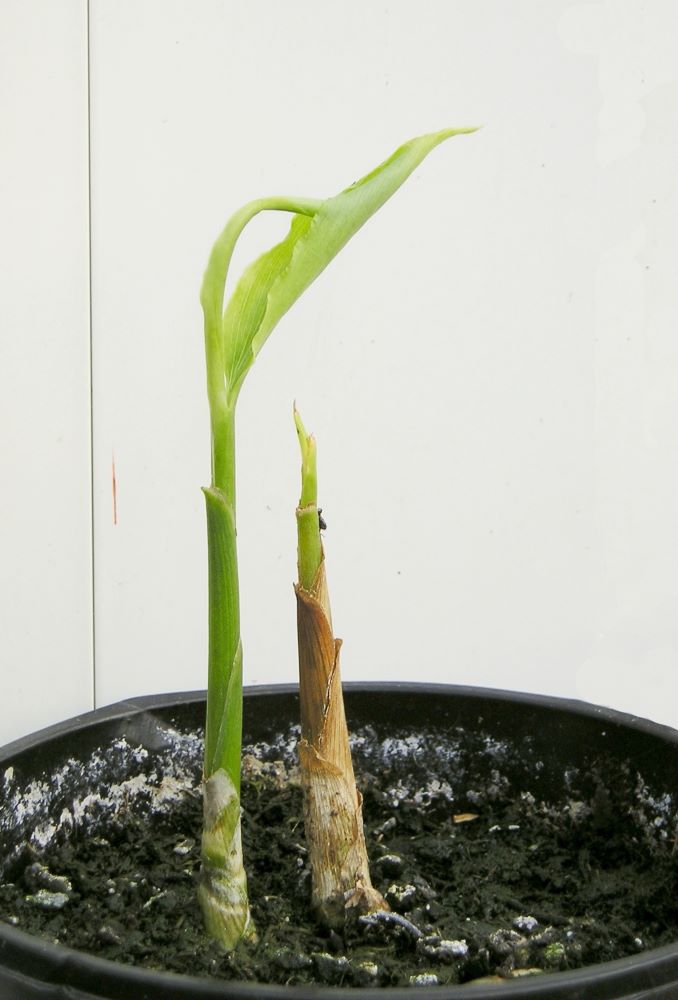
Gardeners in North Florida and other colder climates usually grow their ginger in pots.
I’m in USDA Zone 9B and grow ginger both in the ground and in containers. I find the biggest difference between the two is my watering schedule.
Ginger grown in pots need to be monitored more for over and under-watering.
If your ginger leaves are curling, turning yellow, and attracting pests, you’re probably giving your plant too much water. The soil should never be soggy.
If your ginger leaves are turning dry and brown, then you’re probably under-watering your plant. Always stick your finger into the soil of your ginger container to check that the amount of water your giving the plant is enough to reach the rhizome. You may also want to move your container to a shadier spot.
If you do want to grow your ginger as a potted plant, a 10-gallon container is best. A larger container will give your ginger room to grow so you can harvest it at the end of the season.
Planting Ginger Indoors
Ginger makes a great indoor houseplant. In fact, northern gardeners have no choice but to grow their ginger indoors most of the year because of a cold climate.
When growing ginger indoors, the same rules apply – your ginger will need heat, humidity, and dappled sunlight. Make sure not to keep your ginger container in a cold or drafty spot of your house.
If you plan on keeping your potted ginger outside during the summer (which you should do if your summers get hot enough), you’ll need an easy way to move your container. Ginger pots tend to get quite heavy since they do best in a big container. A plant dolly can help you move your ginger without hurting your back.
Also, use a drip tray under your pot to save your flooring from water damage.
How Long Does it Take for Ginger to Grow?
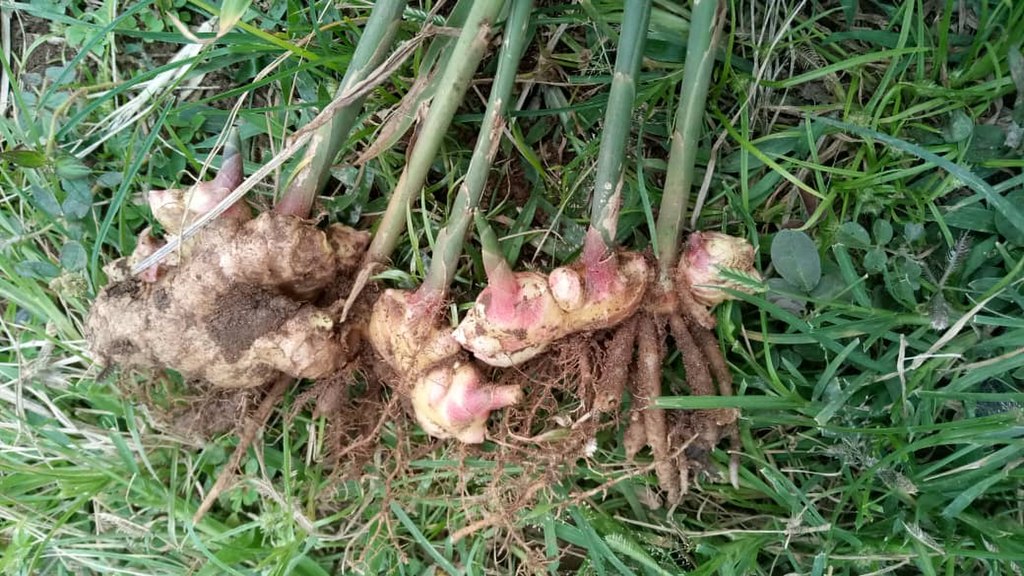
Ginger is fully mature after 8 months, but you can start harvesting your ginger around 4 months. Ginger harvested before it’s fully mature is called young ginger. It doesn’t have skin on it like ginger from the grocery store.
When you grow ginger, you’re able to pick what you need and leave the rest to grow. I always harvest a little bit at a time so that I can enjoy my ginger whenever I want.
To get an idea of how big your ginger root is, dig around the base of the plant and feel around with your fingers without actually digging your whole plant up. That’ll help you figure out how much of the plant you need to dig up to get the size harvest you want. After exploring the rhizome with your fingers, harvest what you want and re-bury the roots you want to keep growing.
If you live in North Florida or a cold climate, dig up your rhizomes before the first hard frost of the year. Those in Central and South Florida can usually leave their ginger in the ground year-round unless it’s an unusually cold winter.
Is All Ginger Edible?
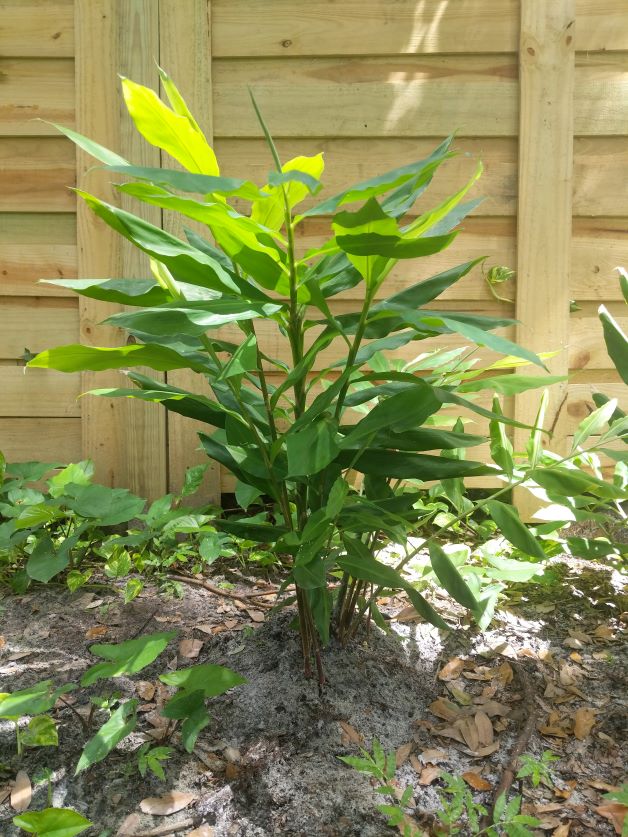
There are several species of ginger, and not all are edible. Awapuhi, also called pinecone ginger, is an ornamental plant that grows wild in Florida and is sometimes mistaken for edible ginger. Awapuhi is a popular ingredient in beauty products and is known as the “shampoo plant.”
Awapuhi is taller than the edible variety and has a unique, pinecone-looking flower. When the green pinecone turns pink, you can squeeze it to get a liquid that smells like ginger and suds up a little bit like shampoo. People in tropical regions around the world use awapuhi for its fragrance and cleansing properties.
While it’s a super cool plant, but awapuhi isn’t exactly edible. Some people say that awapuhi roots are bitter but that you can eat them. Since edible ginger is so easy to grow, I’ve never bothered to try them. Eat at your own risk.
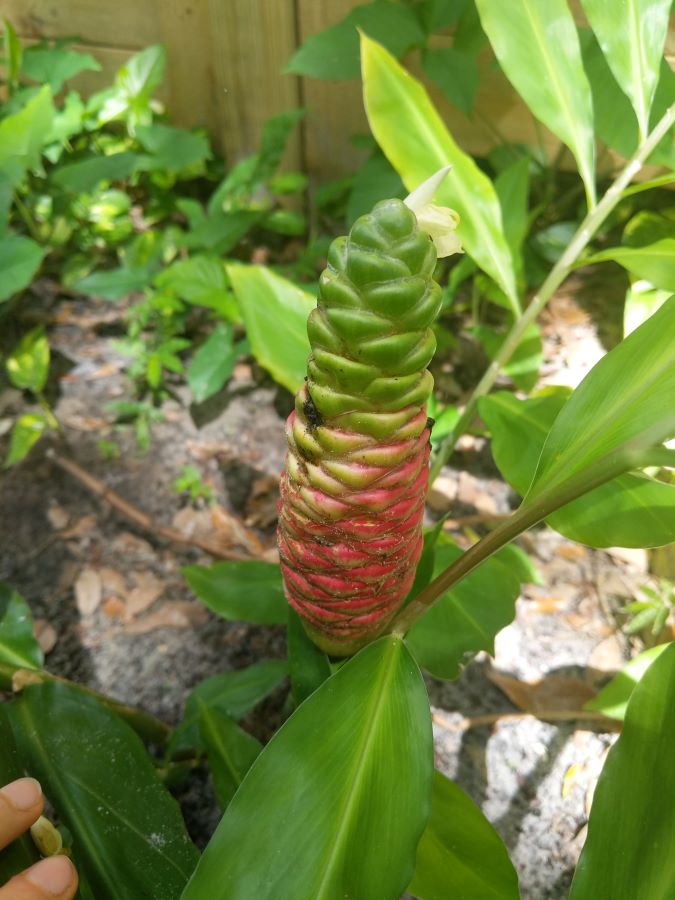
What Herbs Grow in Florida?
For other herbs that thrive in our extreme Florida climate, check out How to Grow Herbs in Florida.
Disclaimer: Offbeet-Gardener is reader-supported. At no additional cost to you, I earn commissions from purchases made through links in this post.

